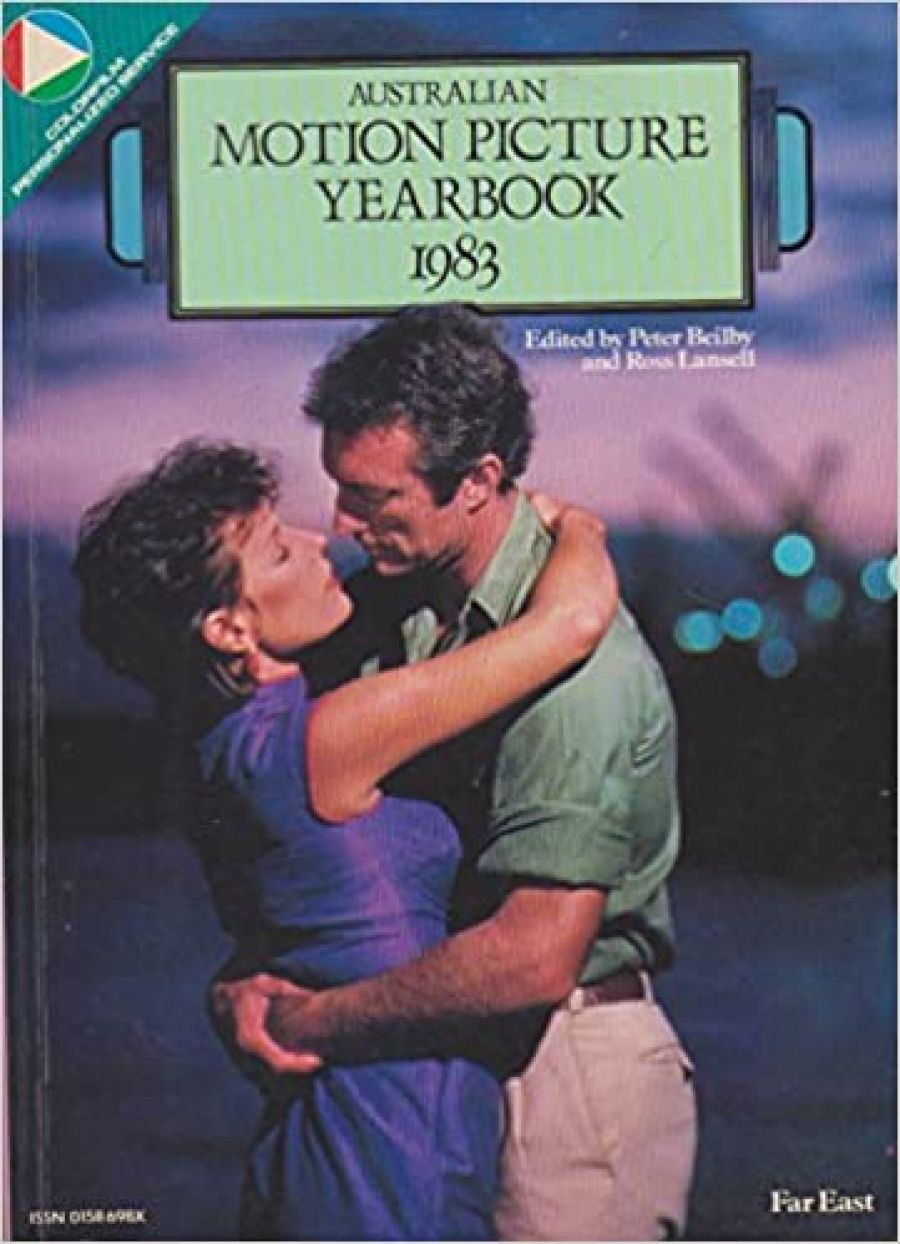
- Free Article: No
- Review Article: Yes
- Online Only: No
- Custom Highlight Text:
This is the third edition of the Australian Motion Picture Yearbook, a production of the leading Australian film magazine Cinema Papers, which is itself solidly established with Issue No. 41 currently on sale, and a circulation of over 12,000 per issue. The Yearbook is one of a number of publications to come from Cinema Papers Pty Ltd, their range – from The New Australian Cinema and The Documentary Film in Australia to the Film Expo Seminar Report – indicating the task the magazine sets itself.
- Book 1 Title: Australian Motion Picture Yearbook 1983
- Book 1 Biblio: Thomas Nelson/Roscope Publishers (Four Seasons, in association with Cinema Papers), directories, illus., 480 p., $25.00 pb
It is an ‘industry’ magazine, heavily supported, as is the Yearbook, by industry advertising; it is also a magazine of record and reference, and it is a critical magazine. There are difficulties in fulfilling these multiple roles but, especially given the absence of other substantially established film journals in the country, Cinema Papers’ editors, Peter Beilby and Scott Murray, have done a creditable job, although the advertisement in the Yearbook describing the magazine as ‘one of the world’s leading film journals’ might be going a little far.
The Yearbook itself is much more obviously, and properly, concerned with the first two of the above functions than the third. As a reference work for people working in or with the Australian film and television industry it is indispensable. Although its obvious model is the Tantivy Press International Film Guide, the Australian Yearbook is very much a local production, and an extremely well-researched and professional one at that. The Pink Pages directory at the back of the volume contains most of the information anyone could want although (a minor quibble) its coverage of magazines manages to exclude a number of titles, including the Australian Book Review, which one might have expected to see.
The proper standard of comparison for the Yearbook, however, is not an overseas publication but its own predecessor, the 1981–82 volume, and here the advances are immediately evident. There are four substantial articles, on Special Effects, on Australian Films in the United States, on the Tax Incentives issue and on Censorship. While the first is well done and has its obvious interest, the other three have important things to say about the present state and future of the Australian film culture. Sue Matthews’ account of Australian films in the United States, some of which had been articulated in a series of radio broadcasts, puts in very clearly defined terms the dilemmas facing Australian production at this stage of the industry’s history. Here, however as with Andrew Martin’s commendably lucid account of the intricacies of the tax incentives legislation and its implications, events have inevitably overtaken the writers, and the Fraser–Howard–McVeigh legislation has changed the ground rules again, in ways this time that seem likely to be better for genuinely local production. Associate Editor Scott Murray’s important piece on film censorship turns a necessary spotlight on this too often forgotten area. Murray has been consistent and persistent in directing attention to the changes which have taken place, and he states unequivocally, ‘There is no doubt Strickland has reversed the trend towards censorship liberality’. The case of Pixote and the Melbourne Festival was only one instance of Chief Commonwealth Censor Strickland’s harder line; Murray provides evidence of a 316 per cent increase in the number of films banned in one year. He also tackles the case of the attempt at a form of censorship of their own by a feminist faction objecting to films which ‘condone (or) advocate regressive ideologies such as racism and sexism’ and concludes, properly, that liberty is indivisible.
The volume’s only concession to film criticism comes in a trio of profiles, of musician Brian May, actor Mel Gibson and director Peter Weir. Brian McFarlane’s piece on Weir is more a career survey than anything like rigorous analysis. While acknowledging the conflicting critical reception that Gallipoli has had, he doesn’t pursue the issues raised by Gallipoli in any depth. Even given the limitations of space and editorial demands the ‘case’ of Gallipoli is too important surely for this perfunctory treatment.
The lack of anything more solidly critical seems a pity, but perhaps it constitutes an accurate representation of the gulf between practice and criticism which is a feature of the industry.
That reservation aside, the volume is a fine achievement, and has laid the ground for its own future success by making itself indispensable.


Comments powered by CComment